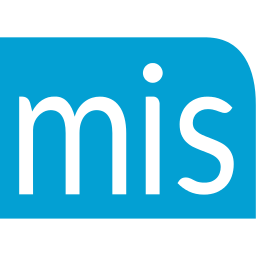Getting screened out by the receptionist or gatekeeper is still one of the biggest causes of phone aversion. Questions like, “Will he know who’s calling?” or “Will he know what this call is about?” or “Has she spoken to you before?” are enough to keep any inside sales rep up at night, and the sad thing is it doesn’t have to be this way! If you follow the basic philosophy provided below and then adapt and use any of the scripts provided, you can instantly increase your transfer rate to the decision maker.
The basic philosophy on getting gatekeepers to put you through is this: Stop trying to hide, trick or fool the gatekeeper into thinking that you already know or have spoken to the prospect before. And this means stop just giving your first name or not providing your company name, and most of all, STOP pitching the gatekeeper. The rule is this:
Gatekeepers just need to know your full name and your company name so they can let the decision maker know who’s on the line. In most cases, that’s it. Use the following proven techniques to fly by them and be connected directly with the decision maker the majority of the time:
Technique #1: Please, please, please. I’ve written about this technique before, but it remains the absolutely most effective and easiest one to use to increase your chances of being put through up to 65 – 75% of the time (I still use this every single day and it WORKS!). Here’s how it goes:
Receptionist answers: “Thanks for calling the ABC Company, how can I help you?
You: “Hi, this is _______ _______ with (your company name), can I please speak with ________, please?”
That’s it. Simple, easy and very effective. The key is to say this with a warm smile in your voice, and make sure you use “please” twice and use the instructional statement: “can I please speak with…” The other key is that you give your full name and your full company name as well (even if it doesn’t mean anything to them).
Technique #2: If you don’t know the name of the contact you need to speak with, use the “I need a little help, please,” technique. Try:
Receptionist answers: “Thanks for calling the ABC Company, how can I help you?
You: “Hi, this is _______ _______ with (Your company name), I need a little bit of help please.”
[It’s crucial that you WAIT for the person to ask how they can help you…]
“I need to speak with the best person who handles (your product or service), who would that be, please?”
Over 50% of the time, if you’ve asked this nicely enough and waited for their response, the receptionist will route you to the right department. When you get there, simply use the previous opening again, and you’ll most likely be connected with the right contact.
The key here is to: 1 – Be polite and put a smile in your voice, 2 – Use please, and 3 – Make sure and WAIT for the person to respond BEFORE you ask for the right person. This works, if you follow the above 3 steps.
Technique #3: If you don’t know the name of the contact, an alternative is to ask to be put through to a department instead, and then use the technique above. This is a great way to completely bypass the gatekeeper and so avoid all screening. Use this:
Receptionist answers: “Thanks for calling the ABC Company, how can I help you?
You: “Hi, could you please connect me with the marketing department, please?”
Again, be assumptive and use that powerful word, “Please.”
Technique #4: If you get screened further, you absolutely MUST know exactly how to respond. Use any of the following techniques:
If the receptionist asks: “Is he expecting your call?”
You answer: “I don’t have an appointment, but could you please tell him that _______ _______ is holding please?”
If the receptionist asks: “Will he know what this call is about?”
You answer: “Not specifically, but please tell him it’s about (his lead tracking), I’ll be happy to hold on, please.”
(The key to the above answer is that you ARE NOT going to pitch the receptionist, and you ARE going to use please and use an instructional statement.)
If the receptionist asks: “Have you spoken to him before?”
You answer: “Not about his lead tracking, but could you please let him know that ________ _________, with __________ is holding please?”
Don’t mistake how simple these techniques seem – they are powerful and they work IF you deliver them warmly and exactly as stated. Just remember, a gatekeeper’s main goal isn’t to screen you out, but rather to pass on accurate information on who is calling from what company, regarding what. Will you run into some gatekeepers who are harder to get through? Of course. And will these techniques work all the time? Of course not. But if you use them consistently, you’ll find that they will work about 70% of the companies you call into. And I’ll bet that’s a lot better than how your current techniques are working now, isn’t it?
